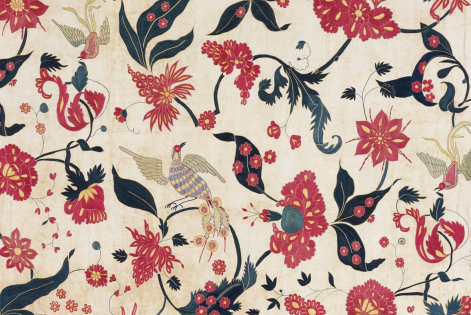
Education
The Fabric of India Explores the History and Vitality of Textiles
Textiles are and have been a defining force in India’s culture and history, so much so that in ancient Greece and Babylon, “India” was shorthand for “cotton.” The Fabric of India, The Ringling’s first major exhibition of Indian art, will showcase the variety, technical sophistication and adaptability of Indian textiles from the 15th to the 21st century.
The Fabric of India, on view July 7-Oct. 13, 2019, will feature more than 140 examples drawn from the internationally-renowned holdings of London’s Victoria & Albert Museum and international partners. Historical dress, carefully preserved fabrics and cutting-edge current fashion will be displayed, giving visitors an opportunity to explore not just the superior craftsmanship of the textiles, but the story they tell about the social, economic and political exchanges that drove their creation and consumption.
“The beauty and technical mastery of the textiles in this exhibition are extraordinary, but there’s also a great deal of substance,” said Rhiannon Paget, Ph.D., curator of Asian art at The Ringling. “Ultimately, the exhibition is not just about textiles or India, but about the shared histories, achievements and fates of people in every corner of the globe.”
Spanning more than 500 years, The Fabric of India showcases the remarkable techniques of weaving, dyeing, printing and embroidery of the Indian textile industry. Organized in six thematic sections, the exhibition features a wide range of objects such as a Kashmir Map Shawl, a large, finely-woven pashmina intricately embroidered with a bird’s-eye view of the city of Srinagar, capital of the territory of Kashmir; a border for a woman’s dress from the 19th century embroidered with green iridescent beetle-wing cases; and a more-than-50-foot Gujarati room hanging that was found abandoned on a New York City street. Fabrics and clothing from contemporary designers that engage with India’s rich heritage of textiles will also be displayed, including pieces by Osman Yousefzada, Dries Van Noten, Hermès, Rahul Mishra and Manish Arora.
“In our interconnected global landscape, exhibitions like this are essential to increasing our understanding of the forces that have shaped an important industry,” said Steven High, executive director of The Ringling. “And the vibrant color and extraordinary artistry of the objects will certainly inspire creators in our community and beyond.”
A 240-page color book, edited by Rosemary Crill, former senior curator of the Asian Department at the Victoria & Albert Museum, will be available for purchase in the Museum Store.



You must be logged in to post a comment Login